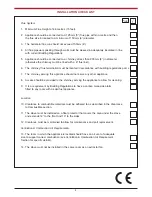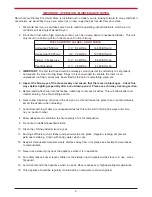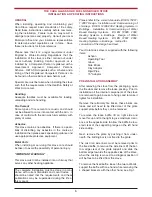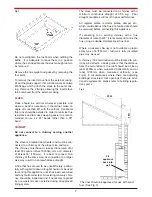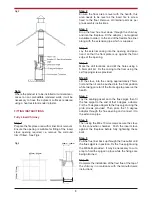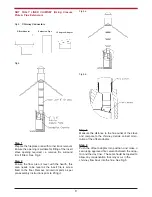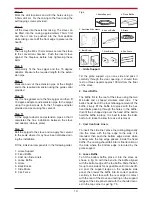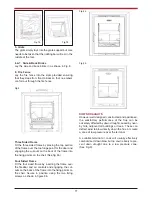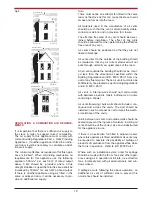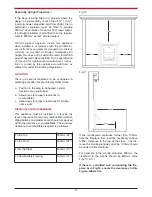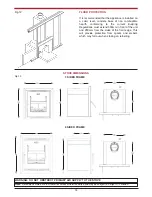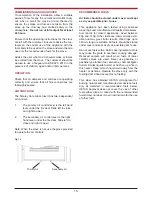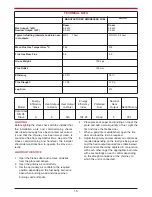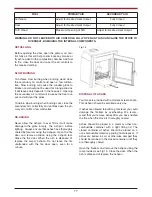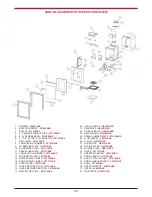
18
GRATE REMOVAL & CLEANING
Over time fuel deposits, clinker & ash can lodge
between the grate and grate support which can
cause difficulties when moving the grate during de-
ashing. To help reduce this occurrence, it is recom-
mended that the grate is cleaned on a monthly basis
when undertaking the general cleaning of the flue
pathways using the following procedure:
1. The grate is removed by removing the ashpan
and then lifting the grate out of the grate insert
from underneath the grate (See fig. 17)
MONTHLY MAINTENANCE
Cleaning Stove Flue Pathways
It is recommended that the flue pathways in the
stove are cleaned on a monthly basis (or less
depending on the soot build-up created by the fuel
being used) and the chimney cleaned annually. To
access the chimney pathways, use the following
procedure:
1.
Remove the firebars and firebricks.
2.
Remove the bottom baffle by lifting up the
front of the baffle and pulling the back edge
forward, allowing it to drop into the firebox
area. Turn the baffle at an angle to remove it
through the door opening (see Fig. 16).
CHIMNEY CLEANING
The chimney should be cleaned twice annually or if
the stove is not used for a prolonged period during
the summer period, it should be cleaned prior to
commencement of usage. The chimney can be
cleaned through the stove depending on the flue
configuration and the flue liner should be cleaned in
accordance with manufacturer's instructions. Always
use a brush with plastic bristles that is the correct
size to reach all areas of the flue.
Fig.16
PERIODIC MAINTENANCE
GLASS CLEANING
The stove glass will self-clean when there is suffi-
cient heat generated by the burning fuel i.e. when
the unit is operated at the maximum air settings. If a
build-up of creosote occurs on the glass it may be
due to low draft conditions, poor quality fuel or oper-
ating the stove at the minimum air settings for long
periods of time. The glass should be cleaned when
cool and cleaned with a non-abrasive cloth using
warm soapy water. For stubborn deposits, a grade 0
steel wool can be used whilst tak¡ng care not to
scratch the glass with any coal/ash deposits.
CLEANING THE OUTER CASING
Cleaning should be done when the stove is cold by
removing any dust or dirt using a dry cloth. Do not
use any water on the matt
black/senotherm finish as this will cause it to rust.
Fig.17

